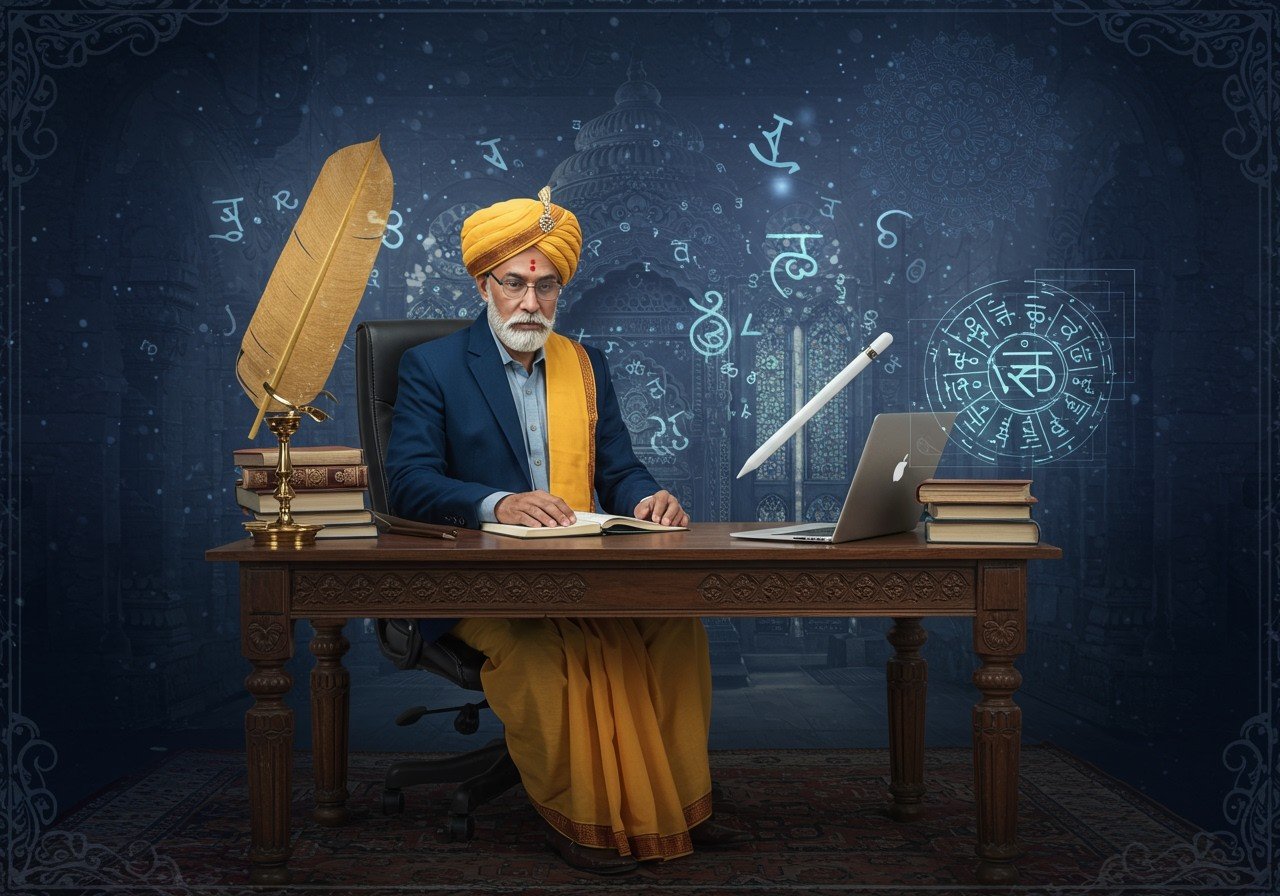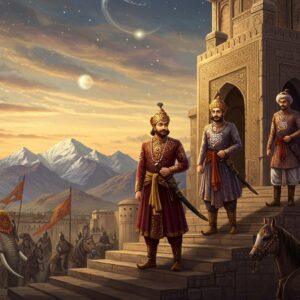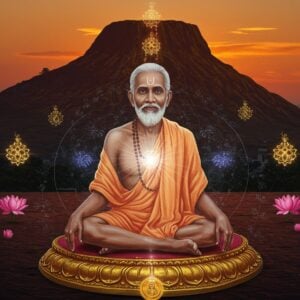
The Kayastha community, known for its rich heritage and intellectual prowess, continues to thrive in 2025, upholding its unique traditions and spiritual practices. From the reverence for Lord Chitragupta to the emphasis on education and social responsibility, Kayastha Dharma remains a vibrant aspect of Indian culture. This article delves into the heart of Kayastha beliefs, exploring their contemporary relevance and how they intertwine with modern life.
Lord Chitragupta: The Divine Record-Keeper
At the center of Kayastha spirituality stands Lord Chitragupta, the divine accountant who meticulously records human actions. More than just a deity, he embodies the values of truth, accountability, and righteousness, guiding Kayasthas towards ethical living. Often depicted with a pen and inkpot, Chitragupta symbolizes the power of knowledge and the importance of honesty in every facet of life.
His mythological connection to Lord Yama, the god of death, deepens his significance. It reminds us of the delicate balance between our earthly existence and the afterlife, a concept deeply woven into the fabric of Kayastha traditions. Worshipping Chitragupta transcends mere ritual; it’s a conscious commitment to a life guided by dharma.
The annual Chitragupta Puja is a pivotal event for Kayasthas. Families create sacred spaces in their homes, adorned with offerings of flowers, sweets, and symbolic writing instruments. This festival, celebrated on Yama Dwitiya during Diwali, reinforces community bonds and serves as a powerful reminder of the values Chitragupta represents. In 2025, technology plays a bridging role, connecting Kayasthas across the globe through virtual celebrations, ensuring that distance doesn’t diminish the spirit of tradition.
Kayastha Traditions: A Tapestry of Values
Kayasthas have long been recognized for their dedication to education, social responsibility, and intellectual pursuits. Historically, their roles as scribes and administrators shaped their community identity, emphasizing knowledge and diligence. This legacy continues to flourish in 2025, with Kayasthas excelling in diverse fields like law, politics, business, and academia. Their commitment to learning reflects the influence of their divine patron, Lord Chitragupta, who embodies wisdom and knowledge.
Festivals and rituals are the lifeblood of Kayastha culture. From the joyous colors of Holi to the vibrant energy of Navratri, each celebration strengthens family ties and community bonds. Some sub-groups observe the Upanayana ceremony, a sacred thread ritual marking the initiation into Vedic studies. Ancestor worship, a deeply ingrained practice, honors forefathers and seeks their blessings, connecting past generations with the present.
Bridging Tradition and Technology
In 2025, technology offers innovative ways to preserve and promote Kayastha heritage. Online platforms provide access to religious texts, puja guides, and virtual communities, connecting individuals worldwide. Social media fosters a sense of belonging and facilitates the sharing of cultural experiences. Virtual and augmented reality technologies create immersive opportunities to participate in rituals and ceremonies, bridging geographical distances while maintaining the authenticity of tradition.
While digital advancements present certain challenges, they also unlock new avenues for cultural expression and preservation. The Kayastha community embraces these opportunities, adapting to the evolving landscape without compromising the essence of their heritage. The future of Kayastha Dharma lies in harmonizing time-honored traditions with modern advancements, ensuring that its rich tapestry continues to thrive for generations to come. Looking for auspicious dates for your ceremonies? Refer to a traditional Panchang.
Kayastha Community: Origins, Beliefs, and Practices
The Kayastha community is a diverse group with a rich history and unique set of beliefs and practices. Let’s explore some key aspects:
Origins and Identity
- Historical Roles: Kayasthas have traditionally served as administrators, ministers, and record-keepers for rulers, demonstrating their literacy and organizational skills within ancient empires. Their expertise in governance and record-keeping played a crucial role in shaping historical events.
- Descent from Chitragupta: Considered descendants of Chitragupta, the divine scribe of Yama, the god of death, Kayasthas carry a legacy of accountability and truth. This lineage connects them to the cosmic balance of justice and reinforces their community values.
- Geographical Spread: Primarily found in North, Central, and Eastern India (Uttar Pradesh, Bihar, Madhya Pradesh, West Bengal), Kayasthas are also present in Maharashtra, Odisha, and Tamil Nadu, showcasing the community’s wide influence and contribution across diverse cultural landscapes. They also have a presence in Bangladesh, reflecting historical migrations and connections.
Religious Beliefs and Practices
- Chitragupta Puja: This significant festival honors Lord Chitragupta, involving offerings and prayers. The symbolic use of pens and inkpots highlights the reverence for knowledge and wisdom within the Kayastha community.
- Ancestor Worship: Ancestor worship holds deep significance for Kayasthas. Through rituals and offerings, families honor their forefathers, seeking blessings and maintaining a connection to their lineage. This practice reflects the importance of family and heritage within the community.
Social Customs and Traditions
- Emphasis on Education: Education has been a cornerstone of Kayastha culture, leading to literacy and intellectual pursuits. This focus on learning has paved the way for professional success in fields like law, politics, and business, upholding their historical roles as knowledge keepers.
- Marriage Practices: Kayastha marriages often involve traditional rituals like ‘kanganbandhan’ (tying of wristbands) and ‘haldi’ (turmeric ceremony), reflecting the community’s deep-rooted cultural practices. While traditionally marrying within their group, inter-caste marriages are also becoming more common, reflecting evolving social norms.
Explore the profound impact of the Ramayana on Indian culture in this insightful article: Ramayana’s Enduring Influence.
Poojn.in: Your Companion on the Kayastha Spiritual Journey
Poojn.in understands the deep significance of Kayastha traditions and offers a dedicated collection of authentic puja items and resources. As India’s largest Dashakarma bhandar, we provide everything you need to observe your rituals with reverence and convenience. Whether you’re seeking complete puja kits, sacred scriptures, or high-quality dhoop and agarbatti, our curated selection caters specifically to the Kayastha community’s spiritual needs. You can even find Clay Doat for Saraswati Puja and other essentials for various ceremonies.
Our expert team is readily available to guide you through product selection and answer any ritual-specific questions you may have. Reach us via phone at 03369029784 or WhatsApp at 9476142738. Shop with confidence, knowing that all our products are carefully packaged and delivered across India with secure payment options. Explore our complete range of Kayastha spiritual products at www.poojn.in.
Featured Products:
- Kalash Kumkum Roli
- Baran Dala Chalon Set
- Sacred Thread (Janeu/Moli)
- Hawan Samagri: Prepare for sacred rituals with our premium Hawan Samagri. Create a pure and fragrant atmosphere during your ceremonies with this carefully curated blend of traditional herbs and ingredients
Embracing the Future, Honoring the Past
As we journey into the future, the Kayastha community stands as a testament to the enduring power of tradition. The reverence for Lord Chitragupta, the emphasis on education, and the commitment to social responsibility continue to shape their identity. Technology empowers Kayasthas worldwide to connect, learn, and celebrate their heritage in innovative ways. Poojn.in is proud to support this journey, providing convenient access to authentic resources that nourish and sustain the rich tapestry of Kayastha Dharma and Spirituality. Learn more about core Hindu beliefs and practices through this resource: Exploring Hinduism. Also you can read Hindu Culture Beyond Temples & Siddhivinayak Temple for more cultural and spiritual insights.


